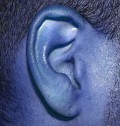Practicing the Speech Skill of Listening

Introduction:A Definition of Listening
Listening is an important part of learning and communication. Without listening, we cannot learn what we are being taught verbally nor can we have efficient communication. To define listening it is necessary to outline the three component parts of this skill.
First of all, hearing is the most basic component and can be considered as a precursor to listening i.e. we can hear some of the basic facts the speaker is telling us.Secondly, we must understand what the speaker is saying which is usually making assumptions about the information we have heard.Thirdly, we make a judgment about what we have heard based on the information we have received from the two previous stages of hearing and understanding.
Three Types of Listening
Three different types of listening have been outlined which are as follows:
1.Competitive listening
This occurs when we are only tuned in to what the speaker is saying so that we can get an opening to put across our own point of view or so that we can look for flaws in what they are saying so we can undermine it. This type of listening is common in debates or arguments.
2. Passive listening
In this instance, we are genuinely interested in what the other person is saying but we do not actively engage with the speaker except to hear,understand and judge what is being said as per the definition of listening. This type of listening occurs with students in a school setting where they pay attention to what is being taught to them by their teacher or professor.
3. Active listening
This is considered to be the best or most useful type of listening. In active listening, we consider carefully what the other person has said and respond by paraphrasing their statement to demonstrate our interest and understanding. In other words, our response is based directly on reinforcing what we have heard. This type of listening often occurs in conversations where there is a good level of communication.
Active Listening
Active listening does not imply that you agree with what the speaker is saying but by paraphrasing what they have said, you are sending a message back to the speaker that you have assimilated and understood what they have said.
Active listening can also involve the use of body language, for example nodding to encourage the speaker.It is necessary to avoid becoming distracted when you are actively listening and boredom is something to avoid so that you don't lose focus on what is being said.
Furthermore, it is necessary to look at the speaker and focus on what is being said to avoid distracting thoughts. It is also important to avoid mentally preparing an argument against the speaker's input because it becomes competitive listening (as outlined above in the three types of listening) at that stage.
Even though a hallmark of active listening is to reinforce what the speaker has said, it is important to time this properly and wait for the right opportunity to avoid interrupting the speaker's train of thought during what is being said. In everyday conversations, natural breaks occur in which you can do this or in more formal,lecture type scenarios, there is more often than not an opportunity to comment or ask questions when the speaker has finished making a point.
Summary and Conclusion
It is estimated that some of us assimilate less than 50% of what is being said to us.As a summary, here is some advice for developing better listening skills:
1.Maintain eye contact and good body language with the speaker.
2. There are two good reasons for paraphrasing what the person has said in a conversation or lecture. Firstly, it provides positive feedback to the speaker and secondly it facilitates our understanding of what has been said.
3. Try to avoid boredom as this will negatively impact on the amount of information you will get from what the speaker is saying.
4.Try to avoid getting into a competitive listening mode where you mentally make counter-arguments for what has been said. Instead, it is best to keep an open mind on what the speaker has to say, even if you disagree with them.
In conclusion, it can be said that the art of conversation is based as much on good listening skills as well as effective speaking skills so it is well worth our while learning to listen so that we can listen to learn.








